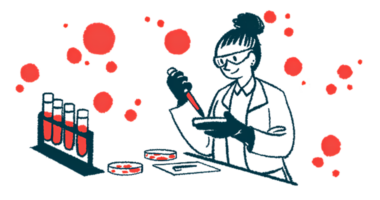Scientists caution on some experimental Parkinson’s therapies
Study finds some treatments may inadvertently damage mitochondria

Some experimental therapies for Parkinson’s disease designed to improve the function of mitochondria may inadvertently damage them instead.
That’s according to the study, “Putative PINK1/Parkin activators lower the threshold for mitophagy by sensitizing cells to mitochondrial stress,” which was published in Science Advances. Researchers said the findings highlight the need for rigor when seeking new therapies.
“Billions of dollars are put into drug development, and that’s why it’s important to utilize our federal funding to understand the mechanisms behind how drugs work in order to improve medicines and make better ones,” William Rosencrans, PhD, postdoctoral researcher at the National Institute of Neurological Disorders and Stroke, a study co-author who worked on the research during graduate training at Caltech, said in a Caltech news story. “It’s important to be conducting basic research investigations into how things work.”
Cells need mitochondria, the so-called powerhouses of the cell, to produce energy. A growing body of research has shown that problems with mitochondrial function in brain cells are a hallmark of Parkinson’s, implying that medicines designed to improve mitochondrial function could be a useful strategy for Parkinson’s treatment.
One strategy to improve mitochondrial function being explored is to increase mitophagy, which is a molecular pathway that cells use to get rid of damaged mitochondria. The mitophagy pathway is mainly regulated by two genes: PINK1 and PARKIN.
Testing therapies
The researchers tested MTK458 and another experimental compound called FB231. Both compounds were designed to increase mitophagy by activating the PINK1 and PARKIN genes. Both therapies were specifically designed to activate their target gene with minimal off-target effects.
The researchers first tested the therapies in standard cellular assays used to look for mitophagy activators. In these models, healthy cells are exposed to toxins that damage the mitochondria, and the researchers look to see if cells exposed to the experimental compound have more mitophagy activation. The results were in line with expectations: Both MTK458 and FB231 increased mitophagy in these models, with especially strong effects when the two experimental therapies were used in combination.
But when the researchers conducted further testing, they found that these compounds don’t actually act directly on genes. Instead, they act as weak mitochondrial toxins, causing small amounts of damage to mitochondria. In the cell models, this leads to an uptick in mitophagy because cells have more damaged mitochondria to deal with.
“Imagine your microwave was broken, and instead of calling your garbage collector to throw it away, you smashed it up further with a sledgehammer,” Rosencrans said. “That would really force you to throw it out, but it’s not what we want our drugs to be doing to our cells.”
The researchers said future studies will need to take extreme care to rule out the possibility that potential therapies might actually be acting as toxins.
“These data indicate the need for caution in screening for mitophagy activators in the presence of mitochondrial stressors because seemingly silent mitochondrial toxins may appear as promising pharmacological mitophagy potentiators [activators], even if the initial compound hits were obtained using … purified enzyme targets in the absence of cells,” they concluded.







